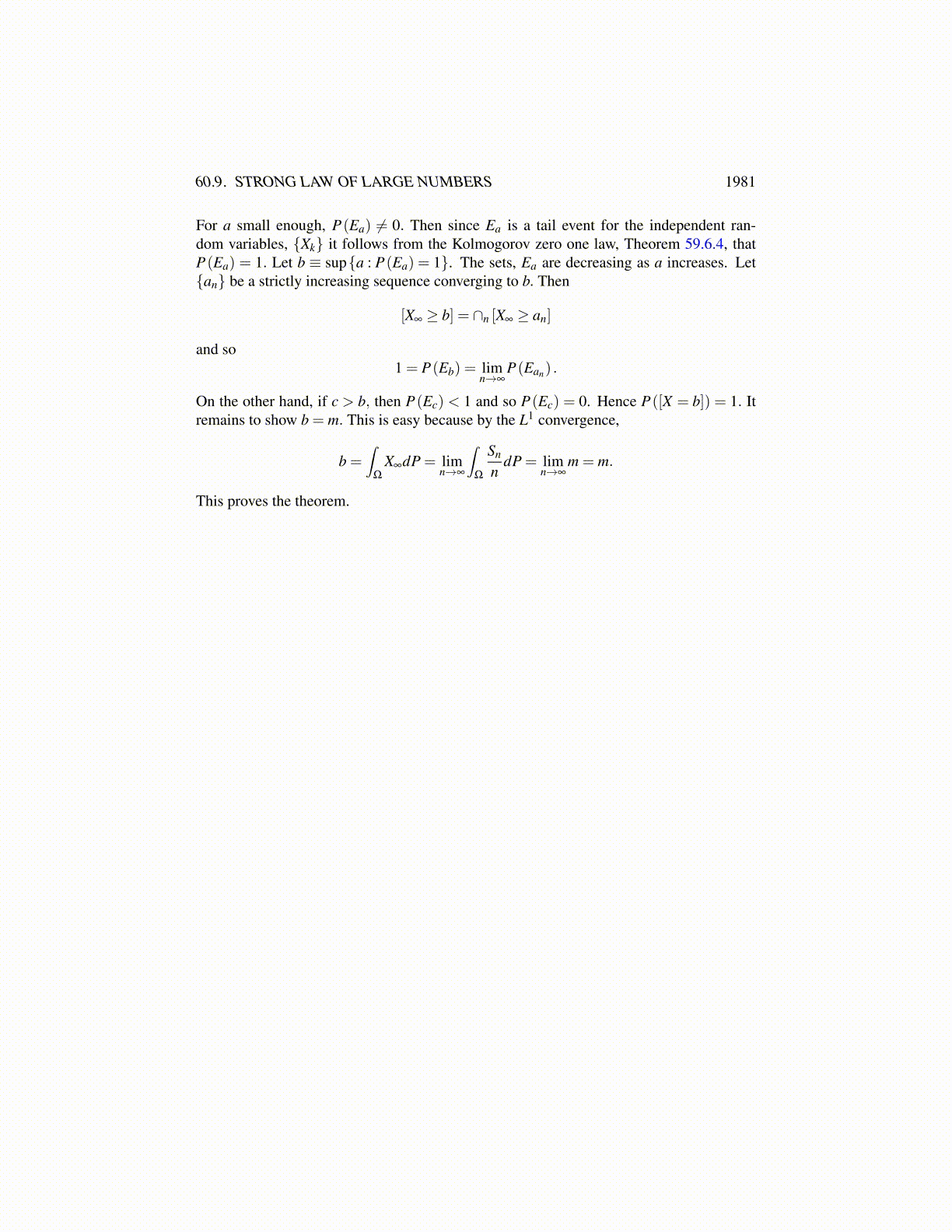
60.9. STRONG LAW OF LARGE NUMBERS 1981
Now by independence again, {Sn,Xn+1,Xn+2, · · ·} are independent and so the above equals∫S−1
n (U)XY−1(V )E (Xk|σ (Sn))dP =
∫(Sn,Y)−1(U×V )
E (Xk|σ (Sn))dP.
Letting
S ≡{
A ∈B(R×RN
):∫(Sn,Y)−1(A)
E (Xk|σ (Sn))dP
=∫(Sn,Y)−1(A)
E (Xk|σ (Sn,Y))dP}
the above has shown this is true for all A in a countable basis. Therefore, it is true for all Aopen in R×RN. Finally, it is clear that S is a σ algebra which shows the above holds forall A Borel in R×RN. Thus, for all B ∈ σ (Sn,Y) ,∫
BE (Xk|σ (Sn))dP =
∫B
E (Xk|σ (Sn,Y))dP
and thus E (Xk|σ (Sn)) = E (Xk|σ (Sn,Y)) a.e.It only remains to prove the last assertion. For k > 0,
Xn+k = Sn+k−Sn+k−1
Thus
σ (Sn,Y) = σ (Sn,Xn+1, · · ·)= σ (Sn,(Sn+1−Sn) ,(Sn+2−Sn+1) , · · ·)⊆ σ (Sn,Sn+1, · · ·)
On the other hand,
σ (Sn,Sn+1, · · ·) = σ (Sn,Xn+1 +Sn,Xn+2 +Xn+1 +Sn, · · ·)⊆ σ (Sn,Xn+1,Xn+2, · · ·)
To see this, note that for an open set, and hence for a Borel set, B,(Sn +
m
∑k=n+1
Xk
)−1
(B) = (Sn,Xn+1, · · · ,Xm)−1 (B′)
for some B′ ∈ Rm+1. Thus(Sn +∑
mk=n+1 Xk
)−1(B) for B a Borel set is contained in
σ (Sn,Xn+1,Xn+2, · · ·)
Similar considerations apply to the other inclusion stated earlier. This proves the lemma.
Lemma 60.9.2 Let {Xk} be a sequence of independent identically distributed random vari-ables such that E (|Xk|)< ∞. Then letting Sn = ∑
nk=1 Xk, it follows that for k ≤ n
E (Xk|σ (Sn,Sn+1, · · ·)) = E (Xk|σ (Sn)) =Sn
n.